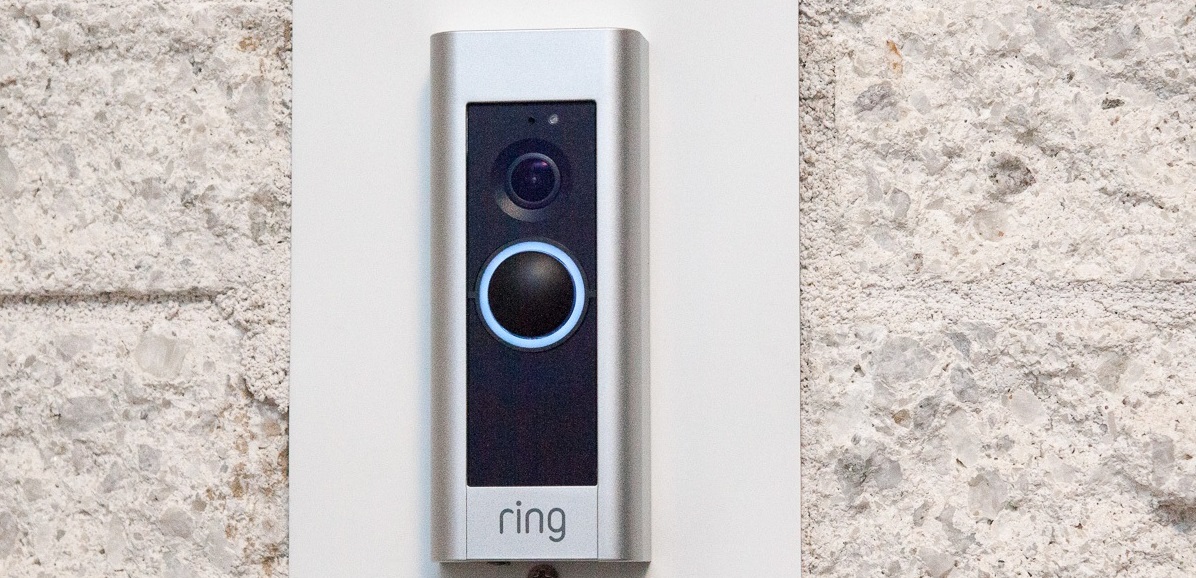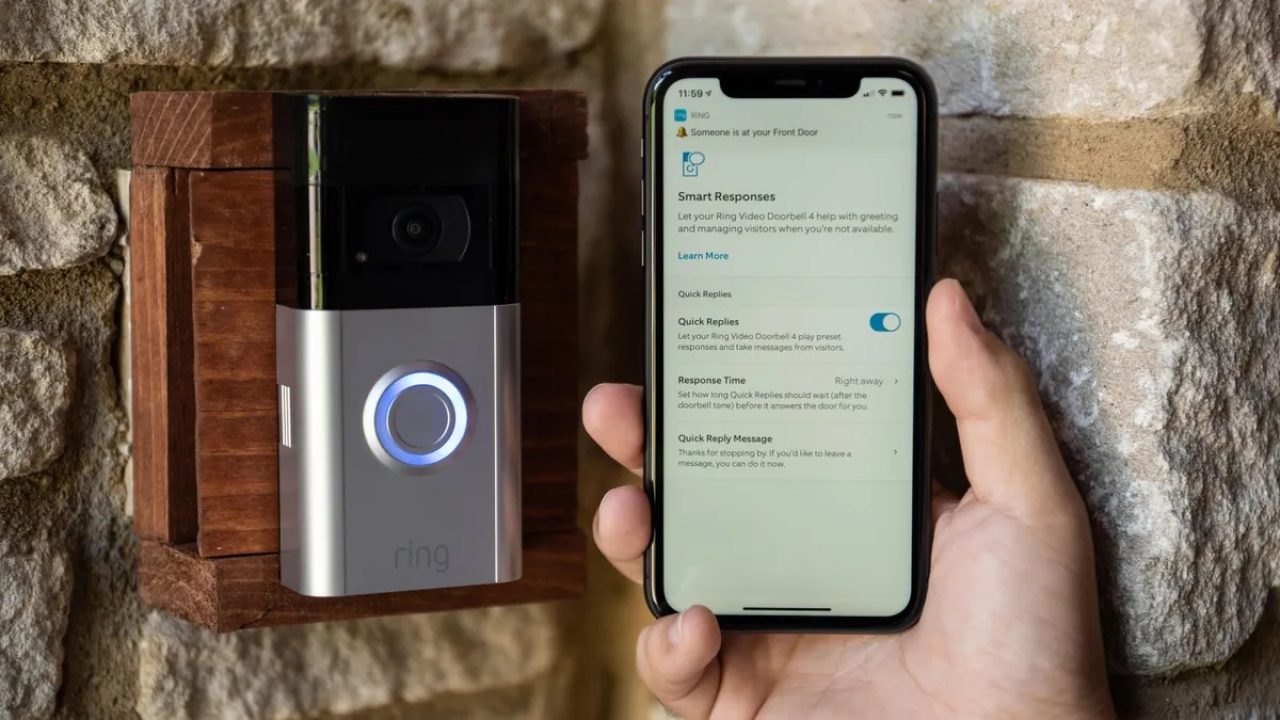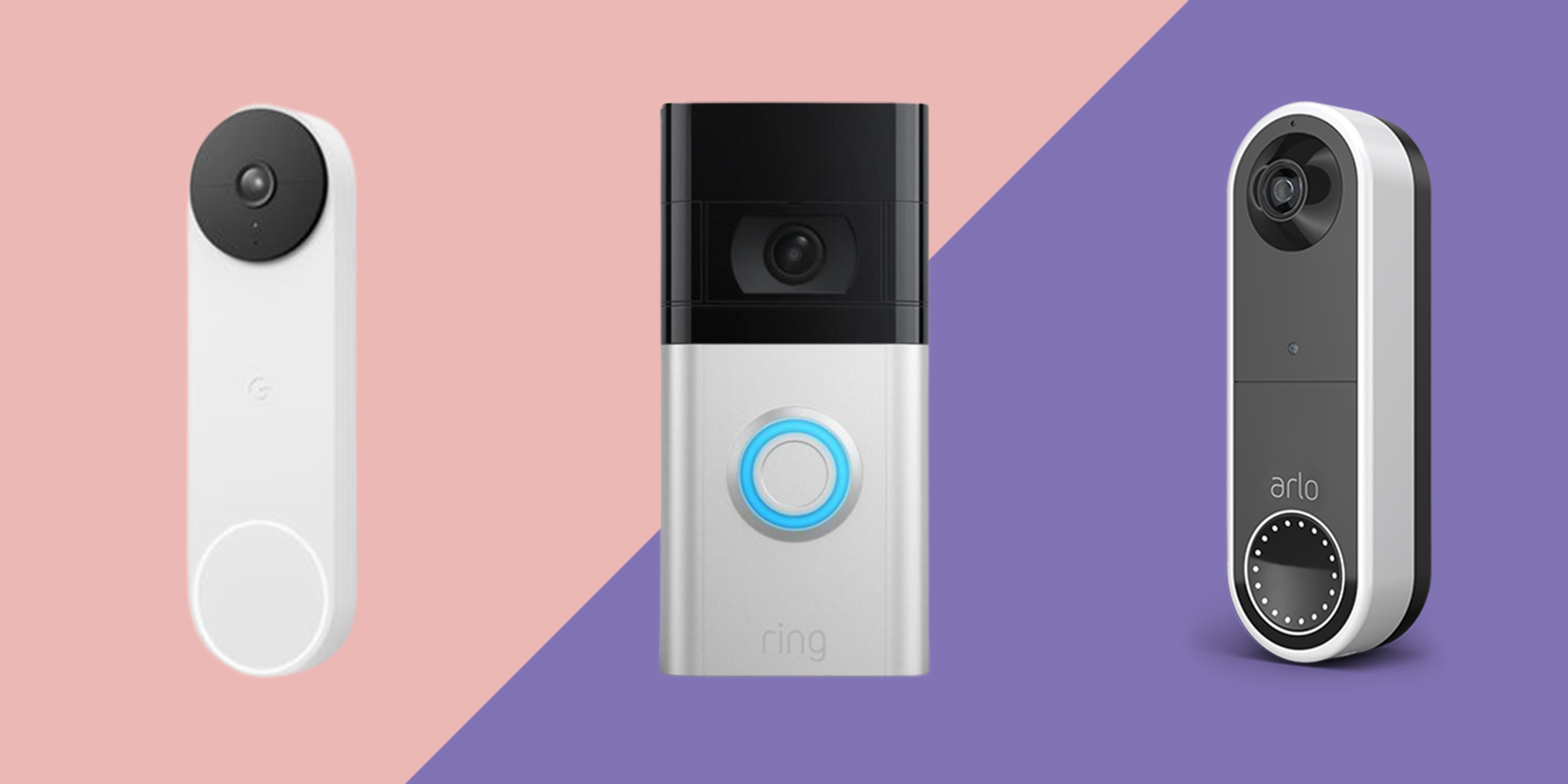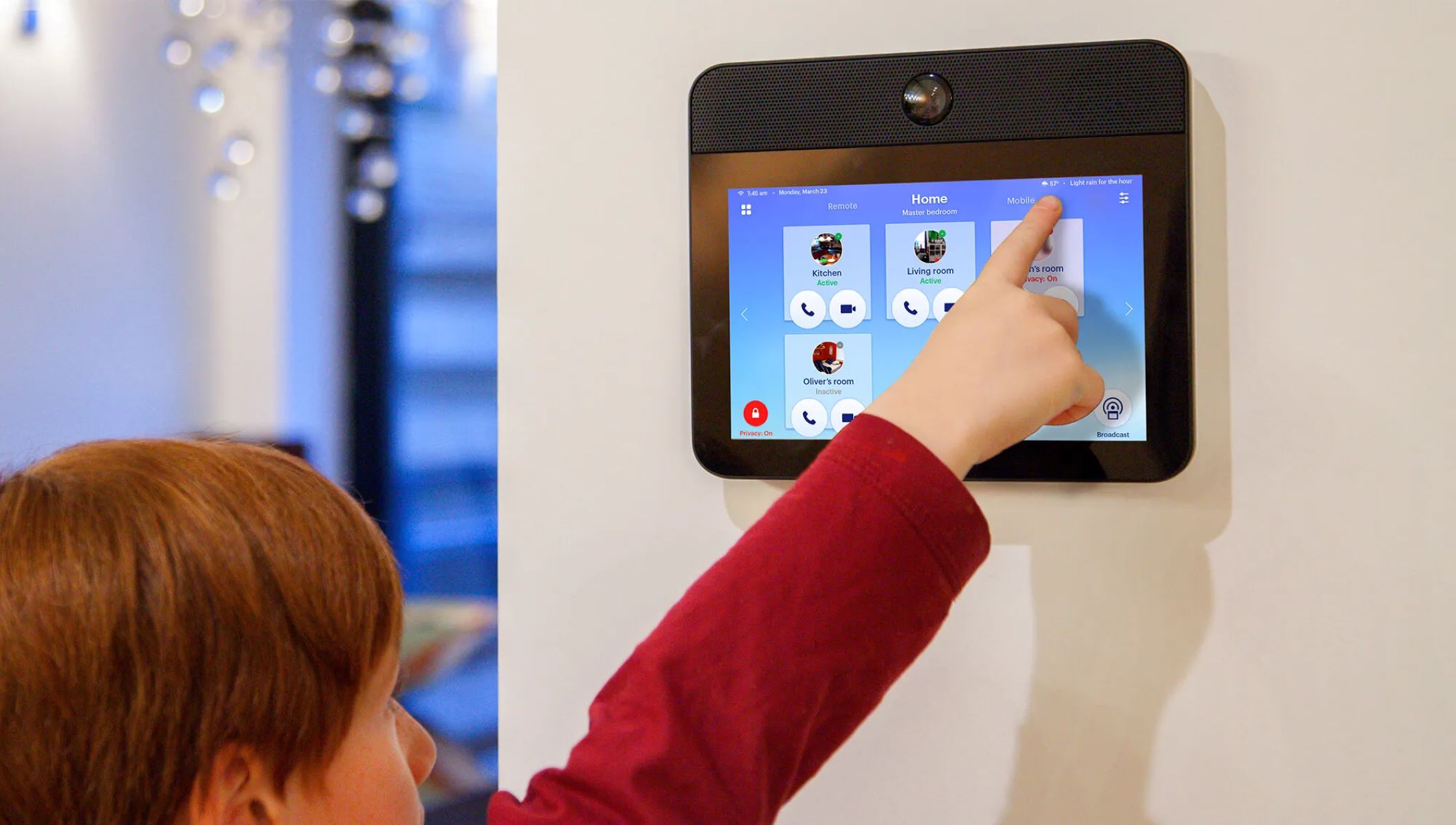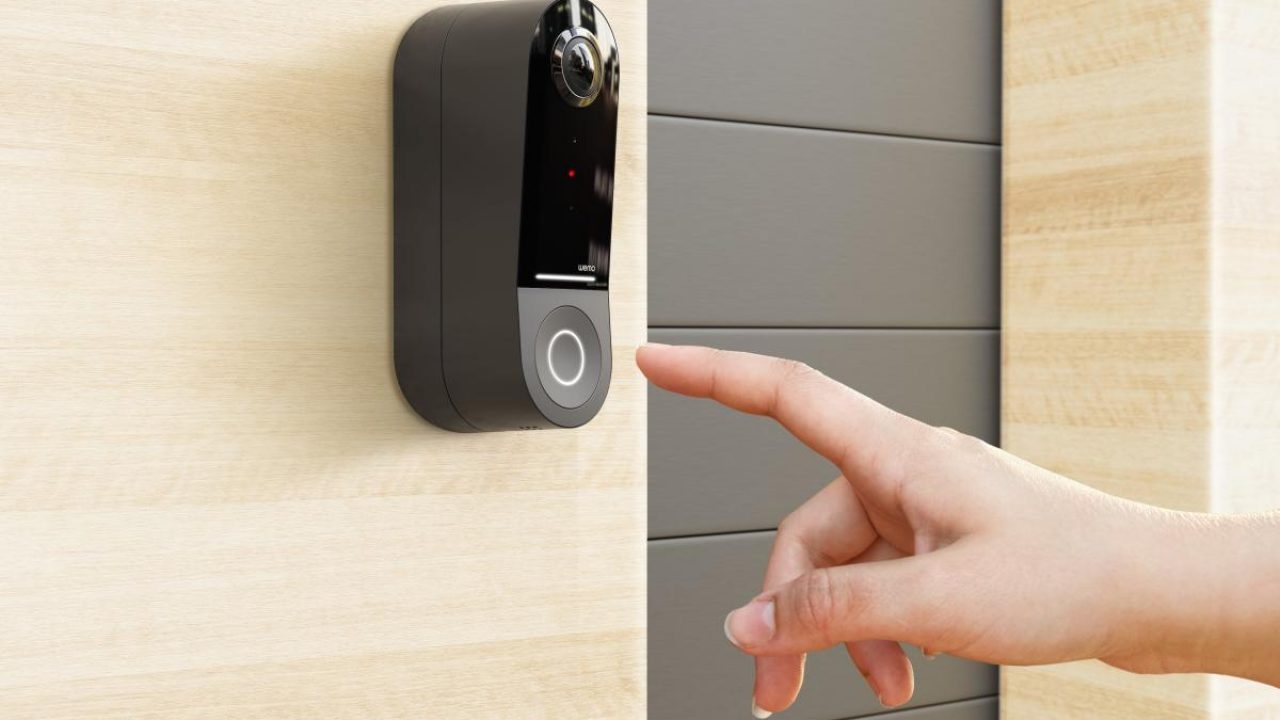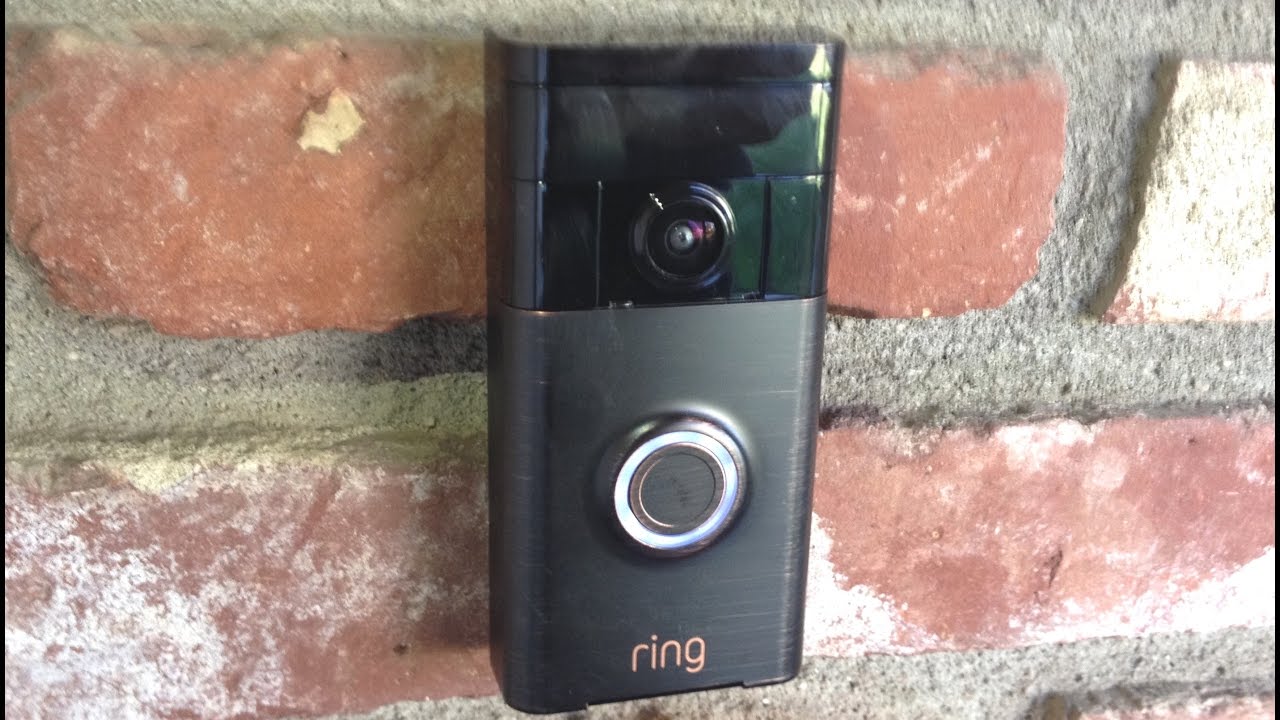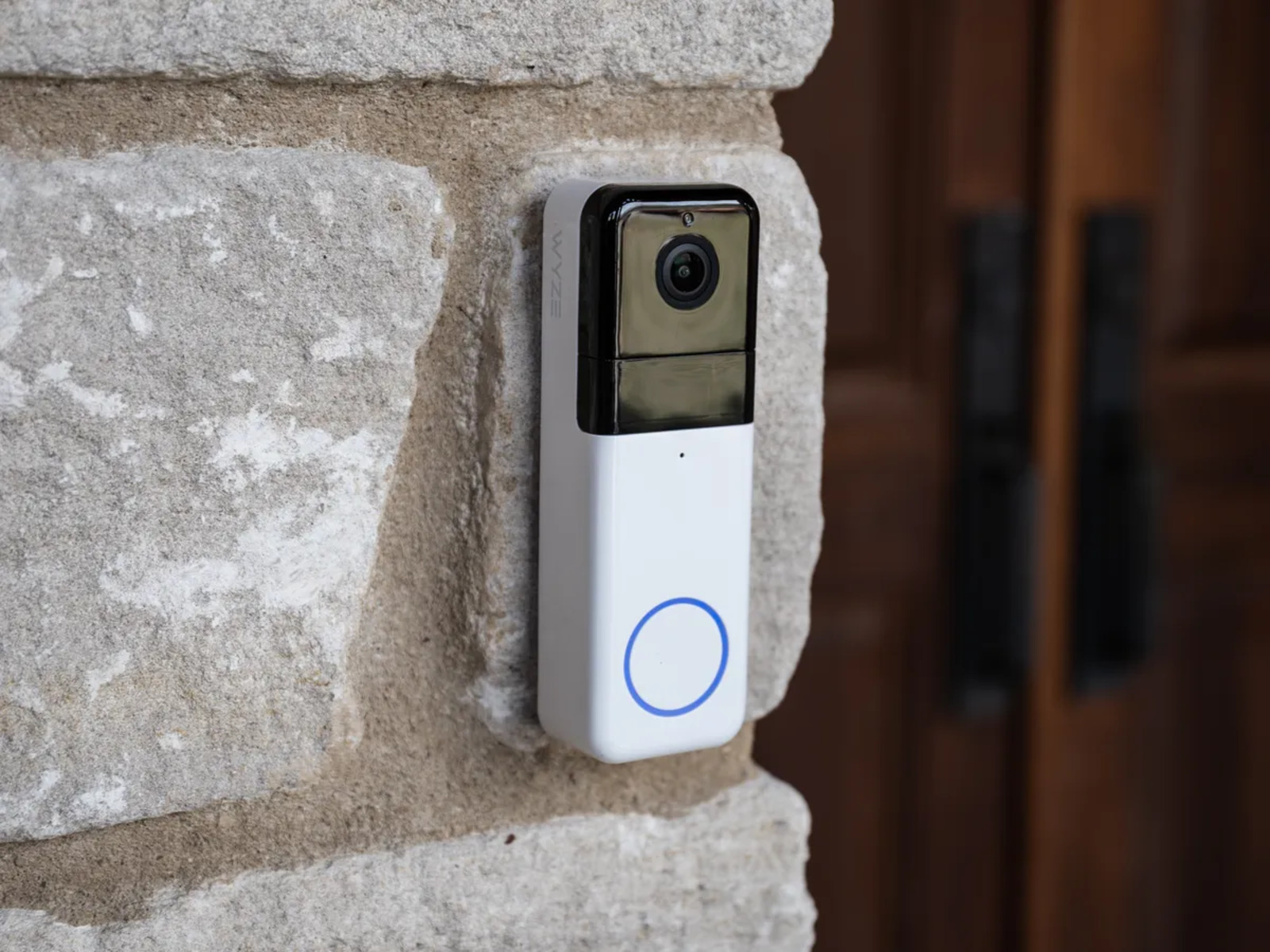Introduction
Welcome to our guide on setting up an intercom system with the Ring Video Doorbell! In today’s world, home security has become a top priority for homeowners. With the advancement of technology, we now have smart devices that can help us keep our homes safe and secure. The Ring Video Doorbell is one such device that has gained immense popularity for its innovative features and ease of use.
The Ring Video Doorbell is a smart doorbell that allows you to see and communicate with anyone who comes to your front door, even when you’re not at home. With its built-in camera, motion detection, and two-way audio, it effectively acts as an intercom system, enhancing the security of your home and providing you with peace of mind.
Whether you’re looking to improve the security of your home or simply want the convenience of being able to answer the door from anywhere, the Ring Video Doorbell is a fantastic addition to any home. In this guide, we will walk you through the process of setting up the Ring Video Doorbell and explain how it works.
Before we dive into the installation process and the various features of the Ring Video Doorbell, let’s take a closer look at the benefits of using this innovative device.
What is the Ring Video Doorbell?
The Ring Video Doorbell is a smart home device that revolutionizes the way we answer the door. It is a sleek and compact doorbell with a built-in camera, microphone, and speaker, allowing you to see, hear, and speak to visitors from your smartphone, tablet, or computer. The device works seamlessly with your existing doorbell wiring and connects to your home’s Wi-Fi network, giving you instant access to live video and audio feed whenever someone rings the doorbell or triggers the motion sensors.
One of the standout features of the Ring Video Doorbell is its ability to provide real-time notifications whenever someone approaches your door. Whether it’s a friendly neighbor, a delivery person, or even a potential intruder, you’ll receive an alert on your mobile device, enabling you to interact with them regardless of your physical location. This ensures that you never miss an important visitor or package, even when you’re away from home.
Additionally, the Ring Video Doorbell offers advanced motion detection capabilities. It uses a sophisticated sensor to detect motion in your door’s vicinity and sends instant alerts to your mobile device. This feature is particularly useful for monitoring any suspicious activity around your home or monitoring when packages are delivered.
Another notable aspect of the Ring Video Doorbell is its cloud recording functionality. By subscribing to the optional Ring Protect Plan, you can access and review past recordings captured by the doorbell’s camera. This can be beneficial for keeping track of who comes to your door throughout the day or for providing evidence in the unlikely event of an incident.
Overall, the Ring Video Doorbell offers convenience, security, and peace of mind. It enhances the safety of your home by allowing you to monitor and interact with visitors remotely. By integrating seamlessly with your existing doorbell setup and connecting to your Wi-Fi network, it provides a modern and reliable solution for answering the door.
Benefits of Using a Ring Video Doorbell
The Ring Video Doorbell offers a wide range of benefits that make it a must-have device for any homeowner concerned about security and convenience. Let’s explore some of the key advantages of using a Ring Video Doorbell:
1. Enhanced Home Security: With the Ring Video Doorbell, you can see and communicate with anyone at your doorstep, even when you’re not at home. This acts as a deterrent for potential intruders and provides you with the ability to monitor and control access to your home.
2. Remote Access: The ability to answer your doorbell from anywhere is incredibly convenient. Whether you’re at work, running errands, or on vacation, you can still interact with visitors and monitor any activity at your front door using the Ring app on your smartphone or tablet.
3. Real-Time Notifications: The Ring Video Doorbell sends instant alerts to your mobile device whenever someone rings the doorbell or triggers the motion sensors. You’ll know who’s at your door and never miss an important visitor or package.
4. Two-Way Audio: The built-in microphone and speaker on the Ring Video Doorbell allow you to have a conversation with anyone at your door. Whether it’s communicating with the delivery person or instructing a guest where to leave a package, this feature adds an extra layer of convenience and control.
5. Motion Detection: The advanced motion detection capabilities of the Ring Video Doorbell enable you to monitor any movement around your front door. This can be particularly useful for identifying suspicious activity or keeping track of when packages are delivered.
6. Cloud Recording: With a Ring Protect Plan subscription, you can access and review recorded footage captured by your Ring doorbell’s camera. This can be helpful for reviewing past events, checking on the status of your home, or providing evidence in the event of an incident.
7. Easy Installation: Installing the Ring Video Doorbell is a straightforward process that can be done by most homeowners. It simply requires connecting the device to your existing doorbell wiring and setting up the Ring app on your mobile device.
Overall, the Ring Video Doorbell offers a range of benefits that enhance the security and convenience of your home. From deterring potential intruders to providing you with remote access and real-time notifications, this device is an invaluable addition to any home security setup.
How Does the Ring Video Doorbell Work?
The Ring Video Doorbell operates using a combination of advanced technology and seamless connectivity. Here’s a breakdown of how it works:
1. Installation: The Ring Video Doorbell is connected to your home’s existing doorbell wiring. It also requires a stable Wi-Fi connection to function properly. Once installed, it is ready to capture video and audio of anyone who approaches your door.
2. Camera and Motion Sensors: The Ring Video Doorbell is equipped with a high-definition camera that provides a clear view of your doorstep. It also has motion sensors that can detect movement in its field of view. Whenever someone approaches your door or triggers the motion sensors, the camera begins recording.
3. Connectivity: The Ring Video Doorbell connects to your home’s Wi-Fi network. This allows it to transmit live video and audio feeds to your connected devices, such as smartphones, tablets, or computers. It uses the internet to send real-time notifications and facilitate two-way communication.
4. Mobile App: To access the features and functionality of the Ring Video Doorbell, you need to download and install the Ring app on your mobile device. The app acts as the central hub for managing and controlling the doorbell, providing you with a user-friendly interface to interact with the device remotely.
5. Real-Time Notifications: When someone rings the doorbell or triggers the motion sensors, the Ring app sends an instant notification to your connected devices. This allows you to see who’s at your door and initiate a conversation using the two-way audio feature of the doorbell.
6. Two-Way Audio: The Ring Video Doorbell enables you to have a two-way conversation with anyone at your doorstep. Using the app, you can speak to the visitor through the doorbell’s built-in microphone, and their voice will be transmitted to your device’s speaker. This feature allows you to communicate with delivery personnel, instruct guests, or even deter potential intruders.
7. Cloud Storage: The Ring Video Doorbell offers optional cloud storage through the Ring Protect Plan. With this subscription, video recordings captured by the doorbell’s camera can be securely stored in the cloud. This allows you to access and review past footage at any time, providing a valuable resource for reviewing events or providing evidence if needed.
Overall, the Ring Video Doorbell combines intelligent camera technology, motion sensors, connectivity, and a user-friendly mobile app to provide you with a seamless and effective way to monitor and communicate with anyone who comes to your front door, even when you’re not at home.
Step-by-Step Guide to Installing the Ring Video Doorbell
If you’ve decided to install the Ring Video Doorbell in your home, follow this step-by-step guide to ensure a successful installation:
Step 1: Gather the necessary tools: Before you begin, gather the tools you’ll need for installation. These typically include a screwdriver, a drill with appropriate drill bits, wire extensions (if needed), a voltage meter, and the Ring Video Doorbell itself.
Step 2: Turn off the power: For safety purposes, turn off the power to your existing doorbell at the circuit breaker. This will prevent any accidental shocks during the installation process.
Step 3: Remove the old doorbell: If you have an existing doorbell, remove it carefully from the wall. Disconnect the wires from the doorbell and set it aside. If there is no existing doorbell, skip to the next step.
Step 4: Attach the mounting bracket: Take the mounting bracket that comes with the Ring Video Doorbell and attach it to the wall or door frame using the provided screws. Ensure that the bracket is level and secure.
Step 5: Connect the wires: Take the wires from your existing doorbell or the wire extensions and connect them to the corresponding terminals on the back of the Ring Video Doorbell. Use the voltage meter to confirm that the correct voltage is being supplied.
Step 6: Mount the doorbell: Carefully align the Ring Video Doorbell with the mounting bracket and slide it into place. Use the provided screws to secure the doorbell to the bracket. Make sure it is firmly attached and level.
Step 7: Test the doorbell: Turn the power back on at the circuit breaker and test the doorbell to ensure it is working properly. Press the doorbell button and listen for the chime or check the Ring app for a notification on your mobile device.
Step 8: Install the device cover: If your Ring Video Doorbell model includes a cover or faceplate, install it securely over the doorbell unit. This will provide protection from the elements and give it a finished look.
Step 9: Set up the Ring app: Download the Ring app on your smartphone or tablet and follow the on-screen instructions to set up your Ring Video Doorbell. This includes connecting the doorbell to your Wi-Fi network and customizing settings according to your preferences.
Step 10: Test and calibrate: Once everything is set up, perform a thorough test of the Ring Video Doorbell’s features. Test the audio quality, motion detection, and live video feed to ensure they are functioning correctly. If necessary, adjust the motion sensitivity settings for optimal performance.
Congratulations! You have successfully installed and set up your Ring Video Doorbell. Enjoy the added convenience and security it brings to your home.
Setting Up the Ring Video Doorbell App
Once you have installed your Ring Video Doorbell, the next step is to set up the corresponding Ring app on your mobile device. The app allows you to access and control the features of the doorbell, providing a seamless user experience. Follow these steps to set up the Ring Video Doorbell app:
Step 1: Download the app: Go to the app store on your smartphone or tablet and search for the Ring app. Download and install the app onto your device. The app is available for both iOS and Android platforms.
Step 2: Create an account: Open the Ring app and follow the prompts to create a new account. You will need to provide your email address, create a password, and agree to the terms of service and privacy policy.
Step 3: Add a device: After creating an account, the app will prompt you to add a device. Select the Ring Video Doorbell from the list of available devices. Follow the on-screen instructions to connect the doorbell to your Wi-Fi network.
Step 4: Customize settings: Once the doorbell is connected, you can customize various settings in the app. This includes adjusting motion sensitivity, setting up motion zones, configuring notification preferences, and more. Take some time to explore the app and tailor the settings to your preferences.
Step 5: Explore the app features: Familiarize yourself with the features and capabilities of the Ring app. You can access live video and audio feeds from your doorbell, view recorded footage (if you have a Ring Protect Plan subscription), and communicate with visitors using the two-way audio feature. The app also allows you to share access with family members or trusted individuals.
Step 6: Set up additional devices (optional): If you have other Ring devices, such as security cameras or smart lighting, you can add them to the app as well. This will allow you to manage and control all your Ring devices from one central location.
Step 7: Test the app: Test the functionality of the app by ringing the doorbell or triggering the motion sensors. Ensure that you receive notifications on your mobile device and that the two-way audio feature works as expected. If any issues arise, refer to the Ring help center or contact customer support for assistance.
The Ring Video Doorbell app is essential for accessing the full range of features and capabilities offered by the device. By setting up the app and familiarizing yourself with its functionality, you can maximize the convenience and security provided by the Ring Video Doorbell.
Customization and Advanced Features of the Ring Video Doorbell
The Ring Video Doorbell offers a range of customization options and advanced features that allow you to tailor the device to your specific needs. Let’s explore some of the key customization options and advanced features:
1. Motion Zones: The Ring Video Doorbell allows you to set up customizable motion zones. This feature enables you to specify certain areas in the camera’s field of view where you want motion detection to be active. By defining these zones, you can reduce false alerts and focus on the areas that matter most.
2. Motion Detection Sensitivity: Adjusting the motion detection sensitivity allows you to customize how sensitive the doorbell is to motion. Depending on your environment and preferences, you can set the sensitivity level to high, medium, or low. This allows for optimal motion detection, minimizing false alerts while ensuring important events are captured.
3. Privacy Zones: The Ring Video Doorbell offers privacy zones, which allow you to block out specific areas in the camera’s field of view. This feature is particularly useful if you have windows or private areas near the door that you do not want to be recorded. By setting up privacy zones, you can maintain your privacy while still capturing important events.
4. Live View: The Live View feature of the Ring Video Doorbell allows you to access a real-time video and audio feed from your doorbell anytime you want. With just a tap on the app, you can view and listen to what’s happening at your front door, even without receiving a motion or doorbell alert. This is especially helpful for monitoring activity and ensuring the security of your home.
5. Activity Timeline: The Ring app provides an activity timeline that allows you to review past events captured by the doorbell’s camera. This feature is especially beneficial if you missed any notifications or want to quickly look back on specific events. It provides a chronological view of recorded activities, enabling you to easily navigate and review footage.
6. Sharing and Access: The Ring Video Doorbell lets you share access to the device with trusted individuals. Whether it’s family members, friends, or neighbors, you can provide them with access to the app, allowing them to receive notifications and interact with visitors. This is especially helpful for households with multiple residents or for granting temporary access to guests or service providers.
7. Integration with Smart Home Devices: The Ring Video Doorbell can be integrated with other smart home devices and platforms, such as Amazon Alexa. This allows you to control and manage your doorbell using voice commands or automate certain actions. For example, you can ask Alexa to show you the live feed from your doorbell on a compatible device with a screen.
With these customization options and advanced features, the Ring Video Doorbell ensures that you have full control over your home’s security. Whether it’s adjusting motion settings, accessing the live view, or integrating with other smart devices, the Ring Video Doorbell offers a customizable and versatile experience.
Troubleshooting Common Issues with the Ring Video Doorbell
While the Ring Video Doorbell is designed to be user-friendly and reliable, there may be times when you encounter some common issues. Here are some troubleshooting steps to help you resolve these issues:
1. Poor Wi-Fi signal: If you’re experiencing connectivity issues with your Ring Video Doorbell, check your Wi-Fi signal strength. Ensure that your doorbell is within range of your Wi-Fi router and that there are no obstacles obstructing the signal. Consider repositioning your router or using a Wi-Fi extender to improve signal strength.
2. Video quality issues: If the video quality of your Ring Video Doorbell is poor or pixelated, check your internet connection speed. A slow internet connection can affect the video quality. Try rebooting your router or reducing the number of devices connected to your network to free up bandwidth.
3. Motion detection problems: If your Ring Video Doorbell is not detecting motion accurately, adjust the motion zones and sensitivity settings in the Ring app. Make sure there are no obstructions blocking the camera’s view and that the motion detection area is properly aligned with the desired coverage area.
4. Unreliable notifications: If you’re not receiving timely notifications from your Ring Video Doorbell, check the notification settings in the Ring app. Ensure that notifications are enabled and that your device’s notification settings are properly configured. Additionally, ensure that your mobile device is connected to the internet and that the Ring app has permission to send notifications.
5. Audio issues: If you’re experiencing problems with two-way audio communication, check the microphone and speaker of your Ring Video Doorbell. Ensure there are no obstructions or debris covering the microphone or speaker. Also, check the audio settings in the Ring app to ensure that the volume is not muted or set too low.
6. Power-related issues: If your Ring Video Doorbell is not receiving power or the battery is draining quickly, check the power source and wiring. Ensure that the doorbell is properly connected to your existing doorbell wiring or that the battery is fully charged. If using battery power, consider adjusting the motion settings to conserve power or consider purchasing an additional battery or solar charger for longer-lasting power.
7. App-related issues: If you’re experiencing issues with the Ring app, such as crashes or errors, try restarting the app or updating it to the latest version. Clearing the app’s cache or reinstalling it can also help resolve any app-related issues. If problems persist, reach out to Ring customer support for further assistance.
By following these troubleshooting steps, you can quickly identify and resolve common issues with your Ring Video Doorbell. If you’re unable to resolve the problem on your own, don’t hesitate to seek assistance from Ring’s customer support team, who can provide further guidance and support.
Conclusion
The Ring Video Doorbell is a game-changer when it comes to home security and convenience. With its advanced features, such as motion detection, two-way audio, and live video streaming, it provides a comprehensive solution for monitoring and managing visitors at your front door.
Throughout this guide, we have covered the various aspects of the Ring Video Doorbell, from its installation and setup process to customization options and troubleshooting common issues. By following the step-by-step installation guide, you can easily set up the doorbell and connect it to your Wi-Fi network. The Ring app offers seamless integration and customization, allowing you to control and monitor your doorbell from anywhere in the world.
The benefits of using a Ring Video Doorbell are numerous. Enhanced home security, remote access, real-time notifications, and two-way audio communication are just a few of the advantages it offers. The ability to customize motion zones, sensitivity settings, and integrate with other smart home devices further enhances its functionality and adaptability to your specific needs.
Remember, if you encounter any issues with your Ring Video Doorbell, there are troubleshooting steps you can take to resolve them. Checking Wi-Fi signal strength, adjusting settings, and ensuring proper power supply are some of the common solutions. If problems persist, don’t hesitate to seek support from Ring’s customer service team.
Overall, the Ring Video Doorbell is a fantastic addition to any home, offering peace of mind, convenience, and improved security. With its innovative features, easy installation, and user-friendly app, you can monitor and communicate with visitors at your front door, no matter where you are. Invest in the Ring Video Doorbell today and experience the transformation it brings to your home security system.







